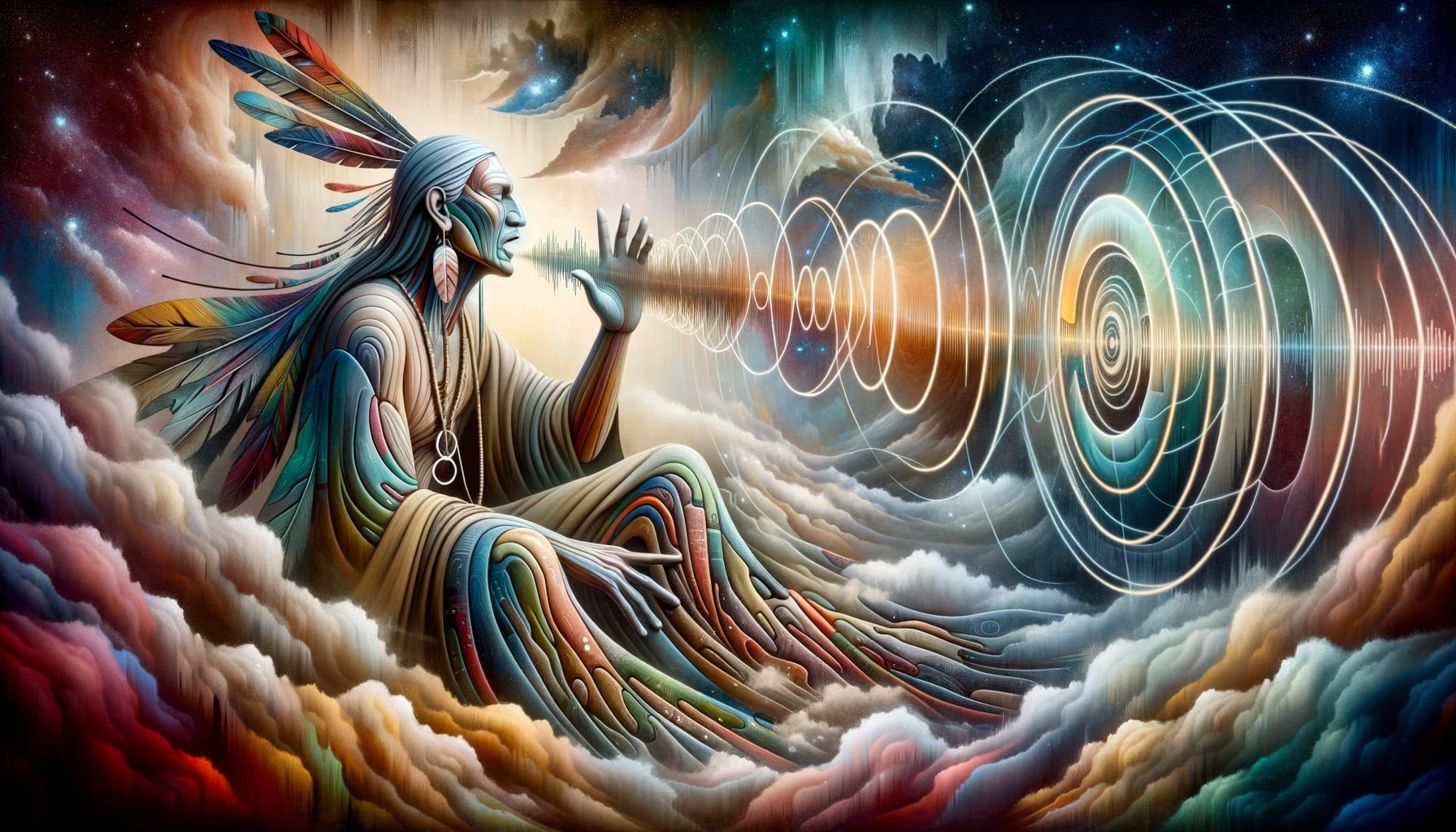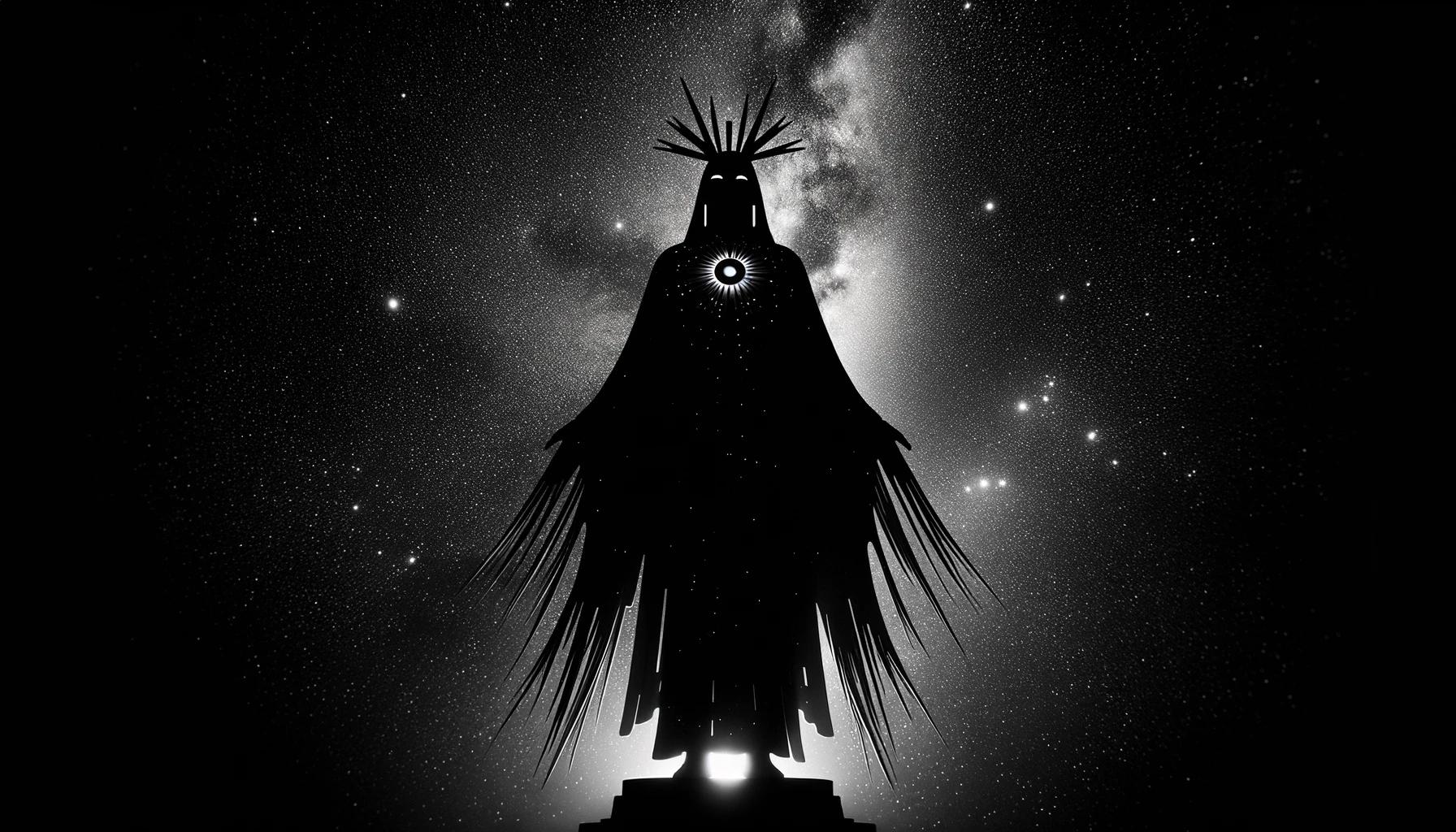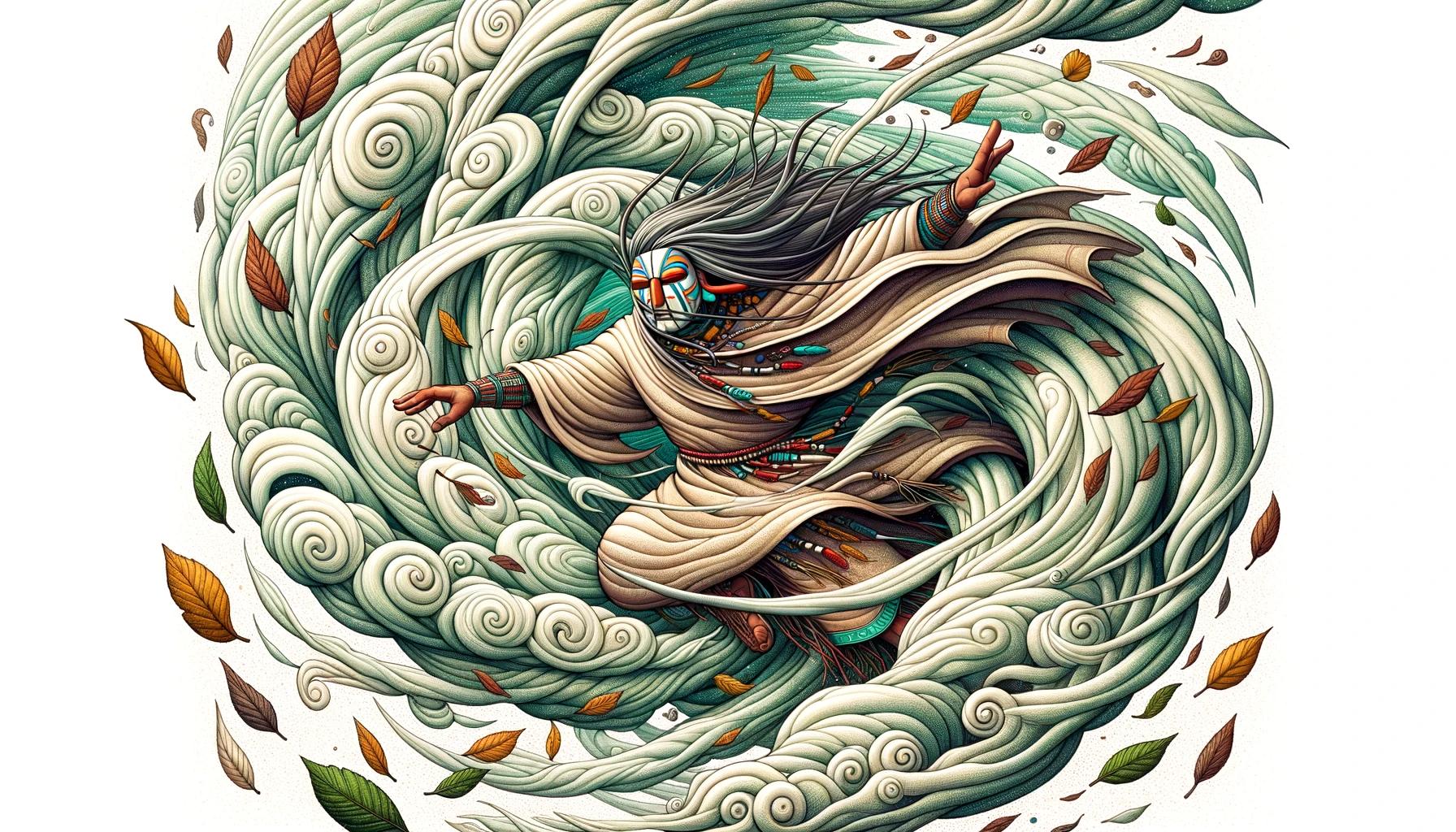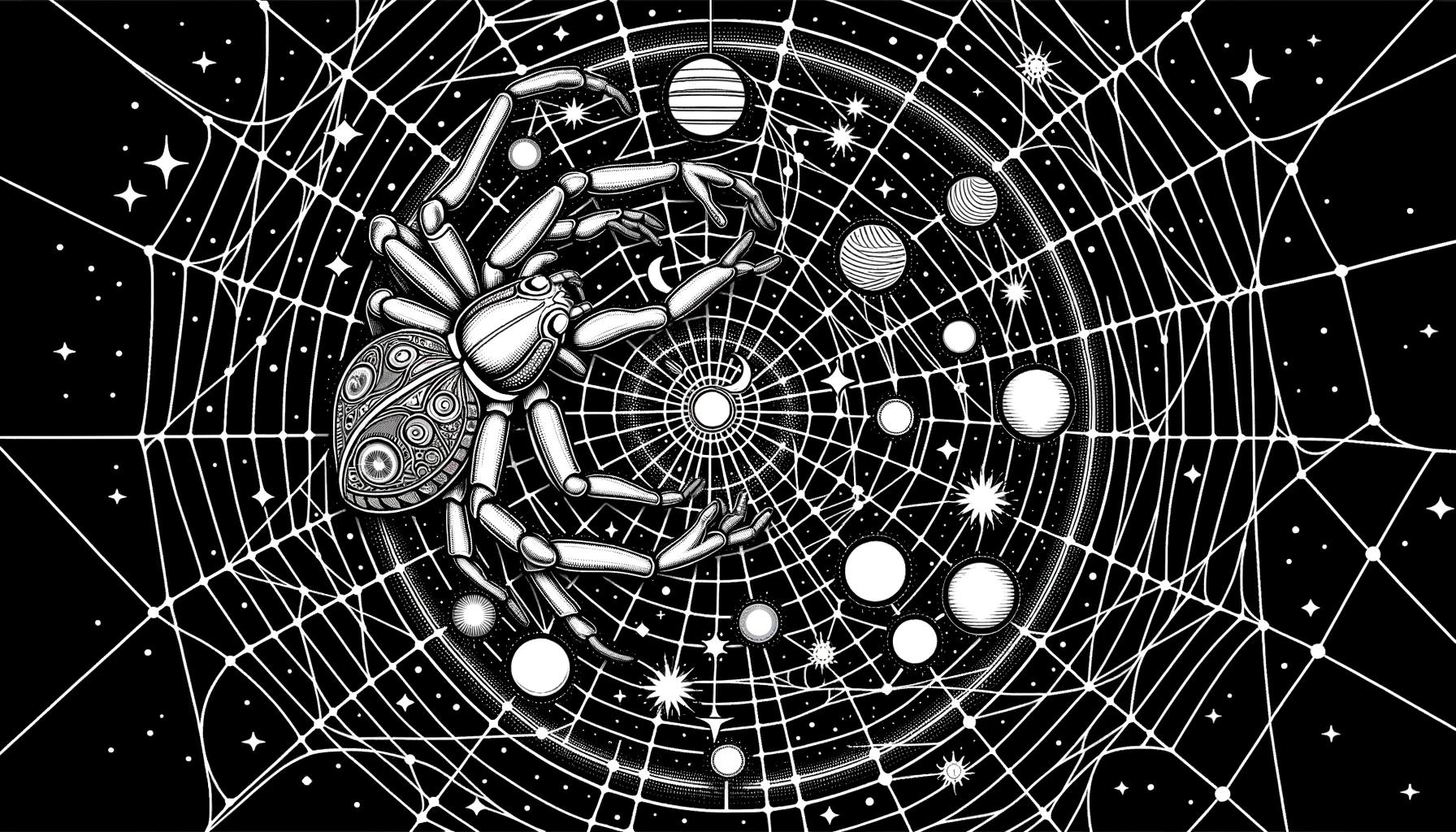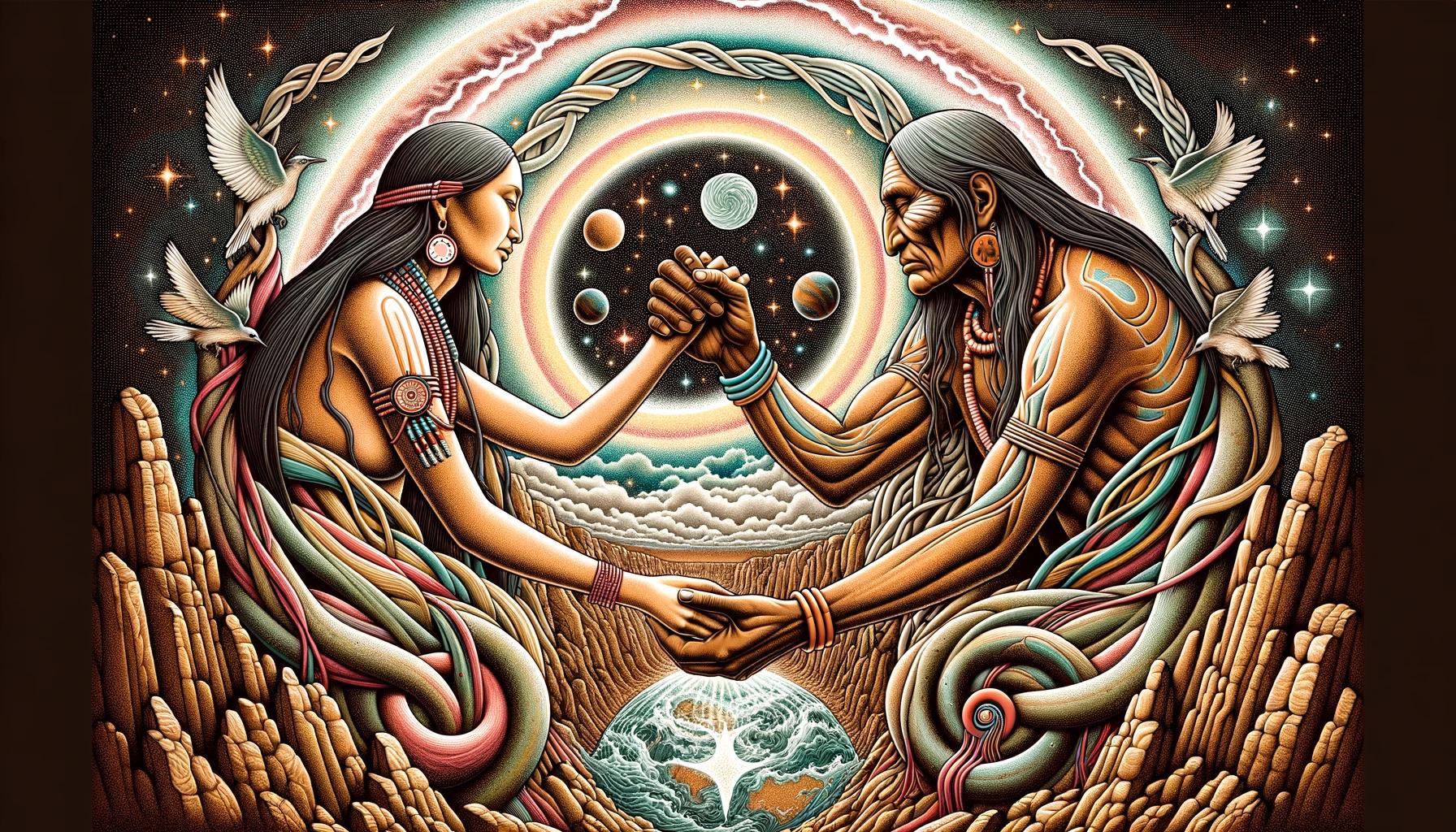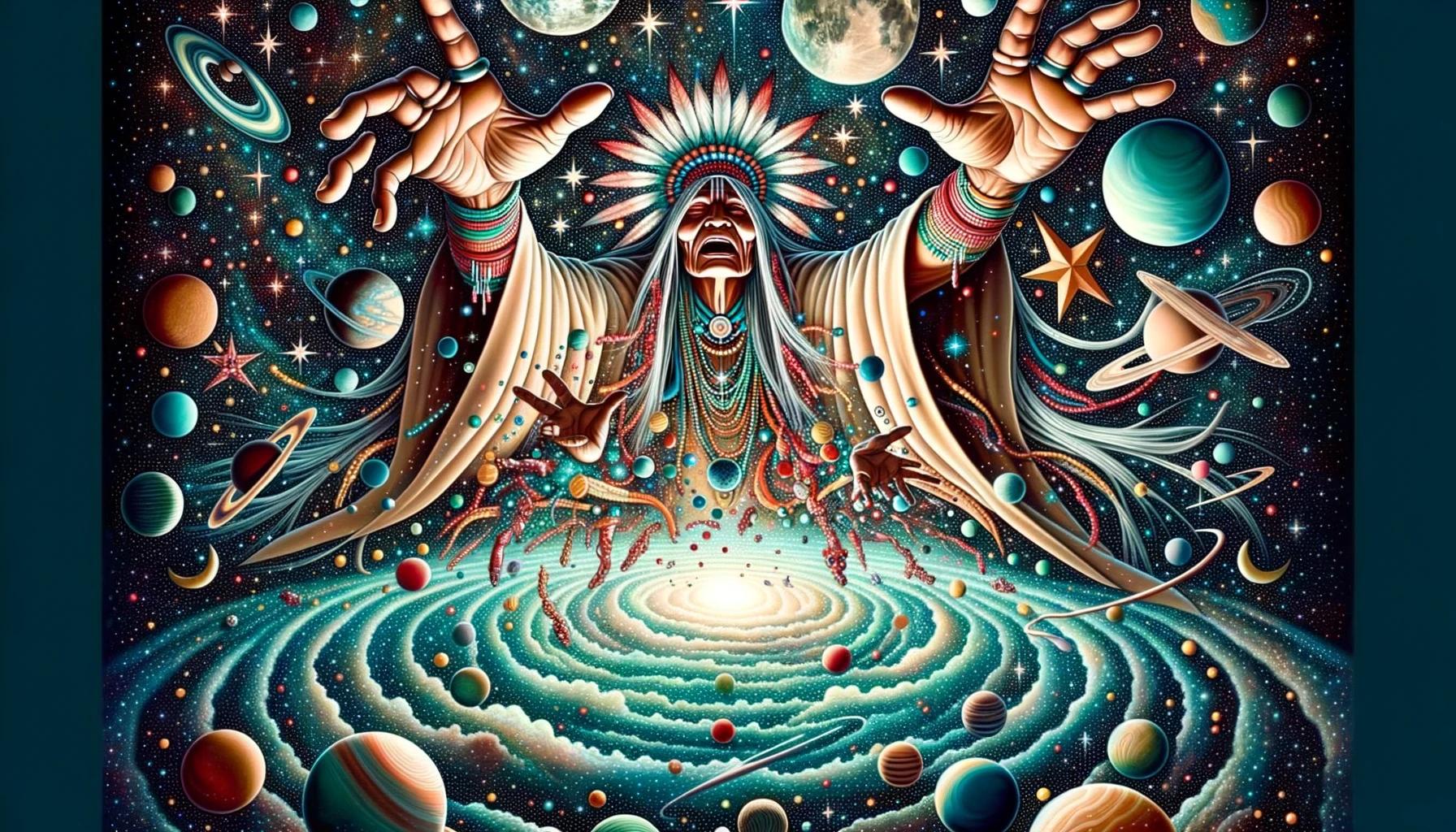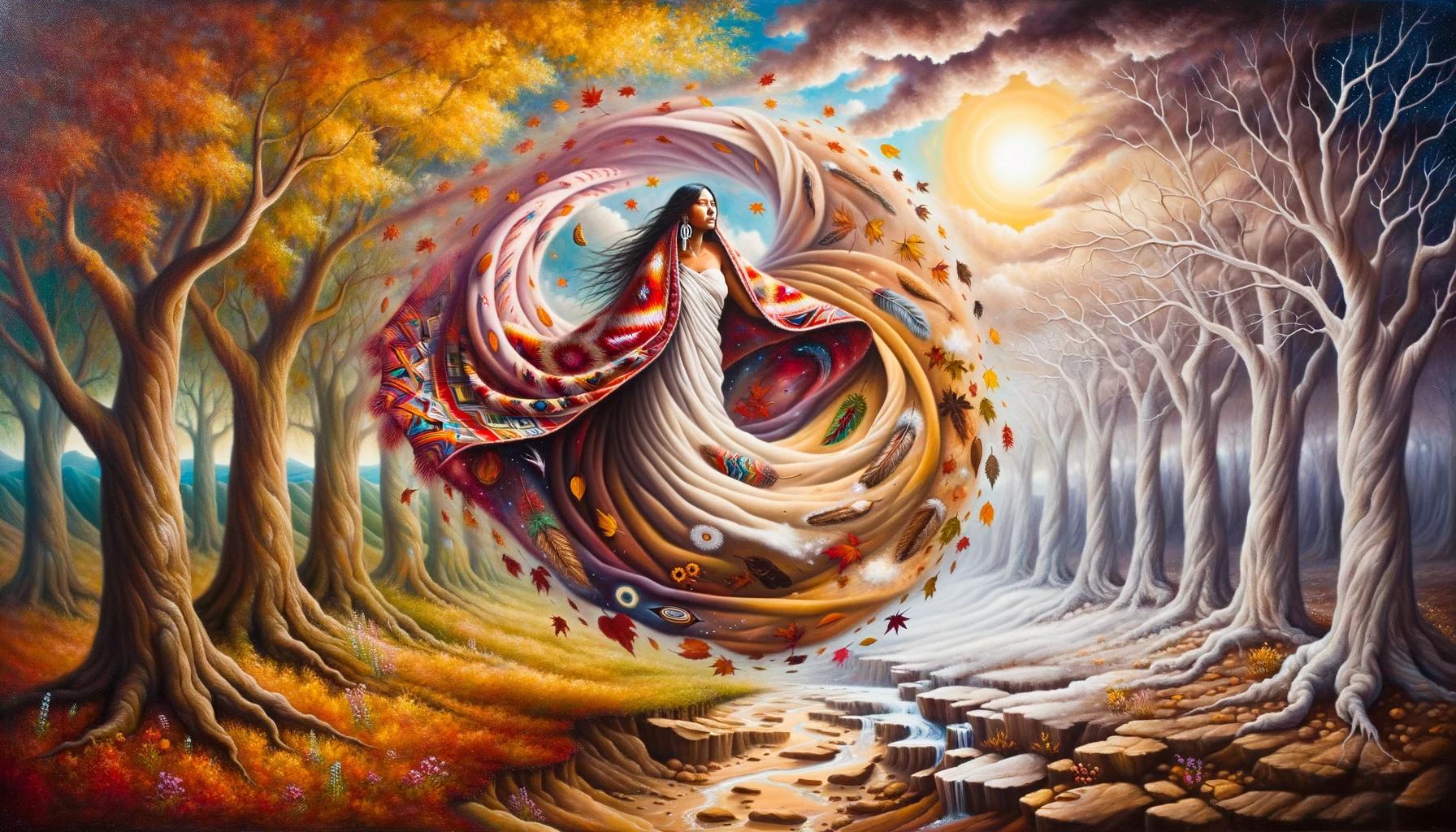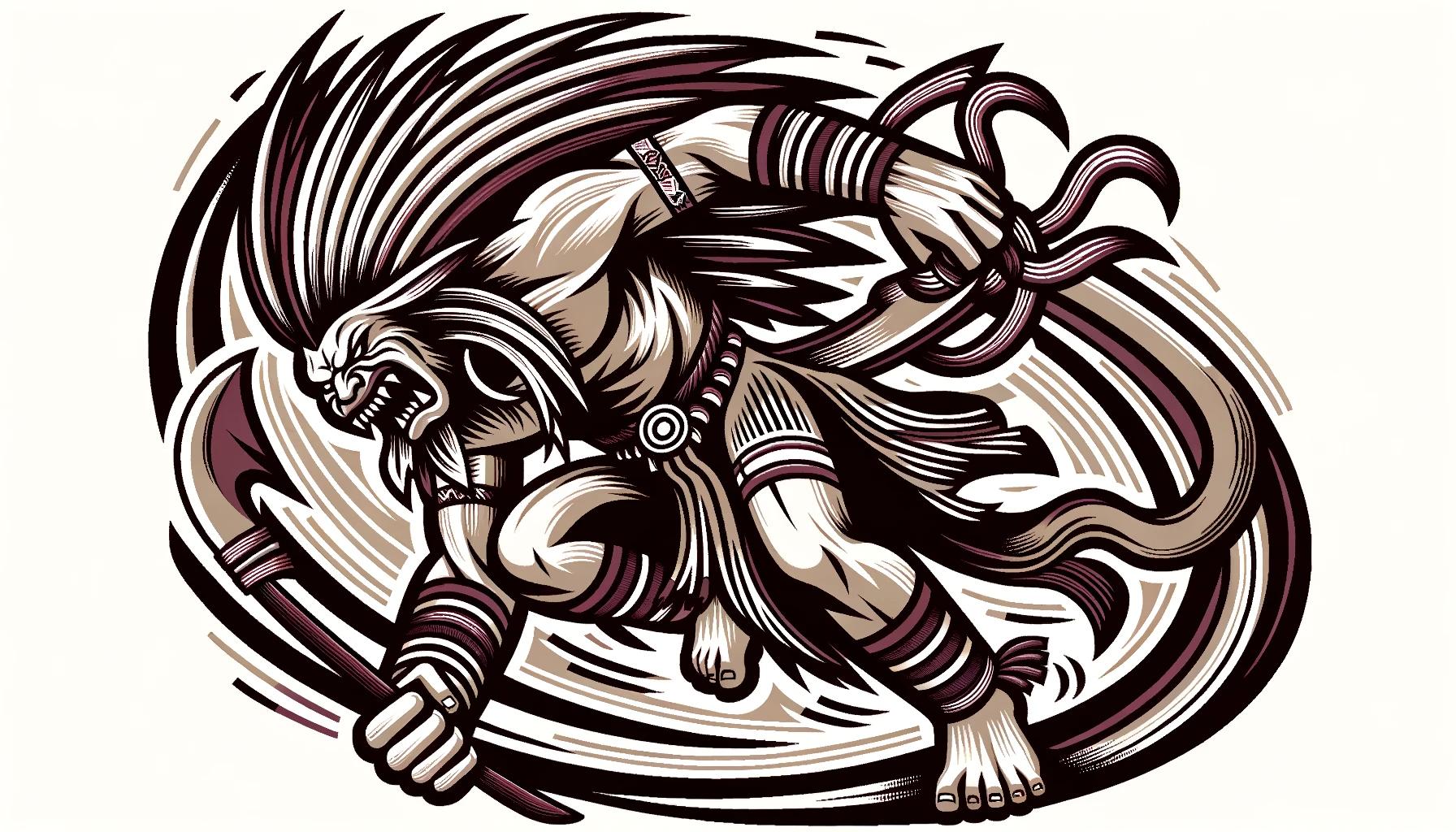Exploring Navajo Talking God: Native American Mythology Unveiled
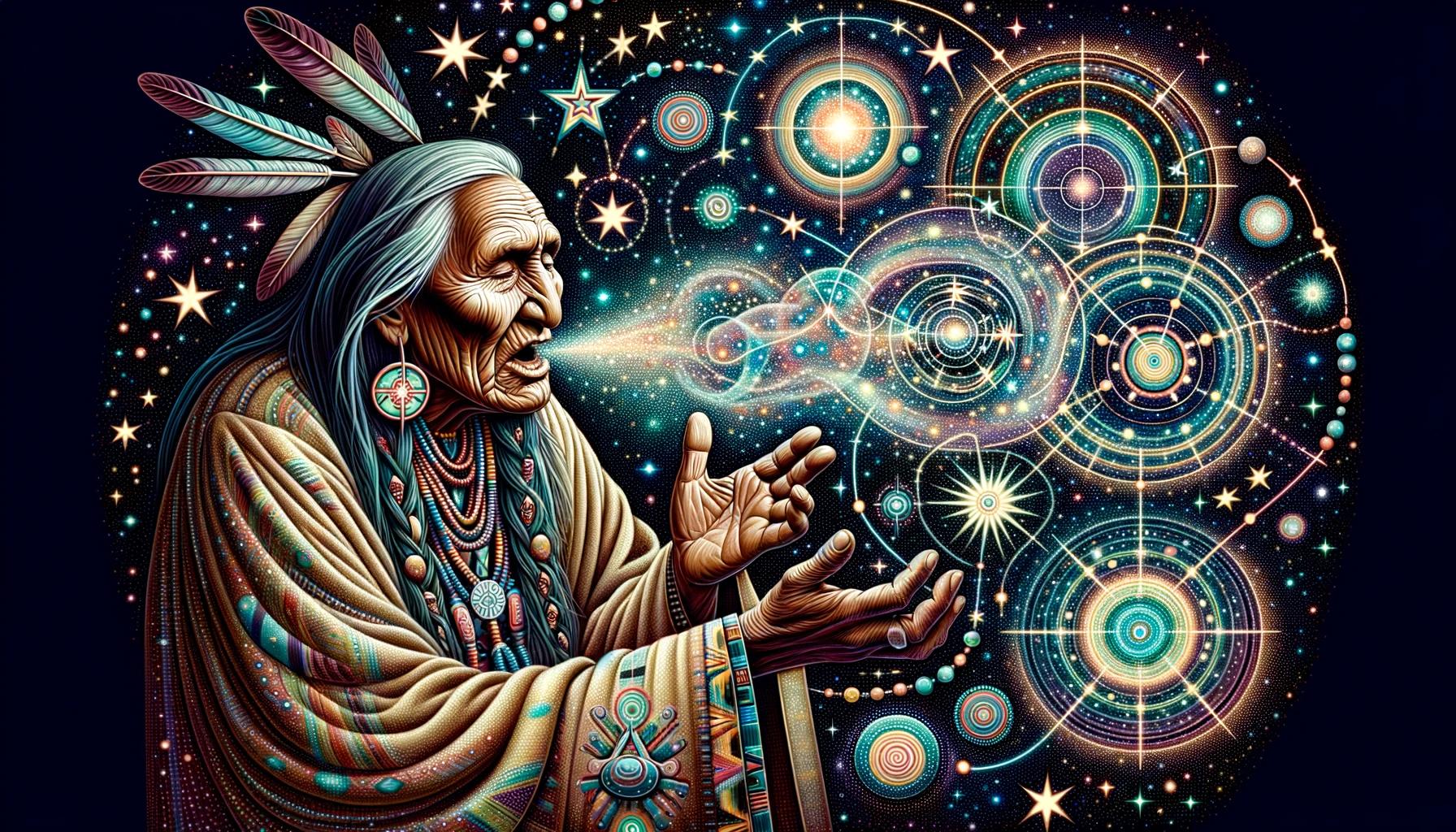
Navajo Talking God, a sacred deity in Navajo mythology, holds significant cultural importance. This deity plays a pivotal role in the Navajo creation story and is featured in various mythological tales and legends.
Navajo rituals and ceremonies, such as the Night Chant Ceremony, involve invoking Talking God for healing and spiritual guidance. Depictions of Talking God can be found in Navajo folk art, including baskets, pottery, and jewelry inspired by Zuni, Hopi, and Santo Domingo traditions.
The connection between Talking God and nature showcases the Navajo reverence for the natural world. This article delves into the origins, rituals, art, and contemporary relevance of Navajo Talking God, exploring its cultural preservation and impact on popular culture.
Navajo Talking God: Exploring the Sacred Deity
Navajo Talking God holds a significant place in Navajo mythology, representing a sacred deity central to their cultural beliefs and traditions. This section delves into the origins of Navajo mythology, the significance of Talking God within Navajo culture, and explores various mythological stories and legends associated with this revered deity.
Origins of Navajo Mythology
The origins of Navajo mythology trace back to ancient times, originating from the Navajo people who have inhabited the Southwest region of the United States for centuries. Their intricate belief system encompasses a rich collection of myths and legends that have been passed down through oral tradition.
These stories serve as a cultural foundation, shaping Navajo identity and providing insights into their worldview.
Significance of Talking God in Navajo Culture
Talking God holds immense significance within Navajo culture, embodying both creator and messenger qualities. As a creator, Talking God played a pivotal role in shaping and creating the world in Navajo creation stories.
Additionally, he serves as a messenger, communicating with other deities and bringing divine guidance, wisdom, healing, and protection to the Navajo people.
Mythological Stories and Legends
Navajo mythology is replete with captivating stories and legends featuring Talking God. These tales offer insights into the Navajo understanding of their origins, the natural world, and the complex relationships between deities.
From stories of the creation of the first man and woman to the interactions between Talking God and other deities, these myths hold cultural and spiritual significance for the Navajo people.
Throughout history, Navajo storytellers have kept these stories alive, sharing them with younger generations as a means of cultural preservation and imparting valuable lessons and teachings.
Navajo Talking God in Navajo Creation Story
Creation of the First Man and First Woman
The Navajo creation story begins with the emergence of the First Man and First Woman from the underworld.
Talking God played a crucial role in their creation, breathing life into them and providing them with the knowledge and skills needed to thrive in the world. This divine act established the foundation for the existence of humanity in Navajo mythology.
Role of Talking God in Navajo Creation Myth
Talking God, also known as Haashchʼéétʼǫǫgí, is considered one of the Holy People who played a pivotal role in shaping the world. In the Navajo creation myth, Talking God, along with other Holy People, participated in separating the various elements of the universe, including the earth, sky, and celestial bodies.
Talking God’s guidance and wisdom ensured the harmony and balance necessary for human life to thrive.
Interaction between Talking God and other Deities
Within Navajo mythology, Talking God interacts and coexists with other deities. One significant interaction is with Changing Woman, a central figure in Navajo creation narratives. Talking God, along with other deities, bestowed sacred gifts and powers upon Changing Woman, emphasizing her importance in the Navajo cosmology.
The relationship between Talking God and other deities influences the order and interconnectedness of the divine realm in Navajo belief.
In Navajo oral tradition, the stories of Talking God’s interactions with other deities and celestial beings are passed down through generations.
These narratives serve to reinforce the Navajo cultural identity and the significance of Talking God within their belief system.
Navajo Rituals and Ceremonies Involving Talking God
The Navajo people have a deep spiritual connection to Talking God, which is evident in their rituals and ceremonies. These practices serve as important ways to communicate with the divine and seek healing and guidance.
Three key aspects of Navajo rituals and ceremonies involving Talking God are explored below.
Night Chant Ceremony and its Connection to Talking God
The Night Chant Ceremony holds immense significance in Navajo culture, and it prominently features Talking God. This sacred ceremony, lasting several nights, is performed to restore harmony and balance to individuals and the community.
Participants, guided by skilled medicine men and women known as “Hataaliis,” immerse themselves in elaborate chants, dances, and healing rituals. Talking God’s presence is invoked through these rituals, as his wisdom and power are believed to bring healing and restoration.
Symbolism and Ritualistic Practices
Navajo rituals and ceremonies involving Talking God are infused with symbolism and ritualistic practices. Symbolic elements such as feathers, pollen, cornmeal, and sacred herbs are used to invoke divine presence and facilitate communication with the spiritual realm.
Intricate sand paintings, created by skilled artists, play a central role in these ceremonies, representing the interconnectedness between humans, gods, and nature. The chants, dances, and gestures performed during these rituals hold deep spiritual meaning, conveying prayers, gratitude, and reverence for Talking God.
Importance of Talking God in Navajo Healing Ceremonies
Talking God is regarded as a powerful healer in Navajo tradition, and his presence is integral to various healing ceremonies. These ceremonies aim to restore physical, emotional, and spiritual well-being. The medicine men and women, with their extensive knowledge and connection to Talking God, perform rituals and administer herbal remedies to facilitate healing.
The belief in Talking God’s ability to guide and provide the necessary energies for healing forms the foundation of these ceremonies.
By engaging in rituals and ceremonies involving Talking God, the Navajo people maintain a strong spiritual connection to their cultural heritage and seek harmony within themselves and their community.
The reverence and respect for Talking God’s role in healing and guidance continue to shape and enrich Navajo traditions in the contemporary world.
- Night Chant Ceremony serves to restore balance and harmony
- Symbols like feathers, pollen, and sand paintings facilitate communication
- Talking God’s presence is essential for healing ceremonies
Navajo Folk Art and Depictions of Talking God
Navajo folk art showcases the rich cultural heritage and artistic traditions of the Navajo people.
Within this realm, the depictions of Talking God hold great significance. Through various art forms, including baskets, pottery, jewelry, paintings, and folk art carvings, the artistic expressions encapsulate the spiritual essence of Talking God.
Navajo Baskets and Pottery Depicting Talking God
Navajo artisans skillfully weave the essence of Talking God into their beautiful, handcrafted baskets. These exquisite baskets often feature intricate designs symbolizing different aspects of Navajo mythology and spirituality.
Depictions of Talking God can also be found on Navajo pottery, which further highlights the importance of this deity in Navajo culture.
Jewelries – Zuni, Hopi, and Santo Domingo Inspirations
Jewelry making is another revered art form among the Navajo people. Navajo artisans create stunning pieces inspired by the jewelry traditions of neighboring tribes, including Zuni, Hopi, and Santo Domingo.
These intricate jewelry pieces often incorporate symbols and motifs associated with Talking God, reflecting the spiritual connection between the Navajo people and their deity.
Native American Paintings and Folk Art Carvings
Native American paintings and folk art carvings provide a visual representation of the Navajo mythology, including depictions of Talking God. These artistic expressions not only capture the essence of Talking God but also offer insights into the diverse artistic styles and techniques employed by Navajo artisans.
From colorful murals to intricately carved wooden figures, these artistic representations bring the stories and legends of Talking God to life.
In conclusion, Navajo folk art has become a significant medium for depicting the revered deity, Talking God. Through skillfully crafted baskets, pottery, jewelry, paintings, and folk art carvings, Navajo artisans convey the spiritual essence and cultural significance of Talking God.
These artistic expressions serve as a testament to the profound connection between the Navajo people and their mythology, allowing future generations to appreciate and preserve their rich cultural heritage.
The Connection between Talking God and Nature
The Navajo people have a deep spiritual connection with nature, and Talking God plays a significant role in this relationship.
Let’s explore some key aspects of this connection:
Talking God as the Keeper of the Four Sacred Directions
According to Navajo beliefs, Talking God serves as the guardian of the Four Sacred Directions: east, west, north, and south. Each direction holds special significance and represents different elements of the natural world.
Talking God is seen as the protector and guide in maintaining harmony and balance across these directions.
Relationship with Wind, Clouds, and Other Natural Elements
Navajo mythology associates Talking God with various natural elements. The wind is considered an expression of Talking God’s voice, carrying his messages and blessings throughout the land. Clouds are believed to be physical manifestations of Talking God, symbolizing his presence and his connectivity with the heavens.
In addition to wind and clouds, other natural elements such as rain, sun, and lightning are also believed to be influenced by Talking God. These elements are seen as essential for the growth and sustenance of life, and Navajo people offer prayers and songs to honor the power and influence of Talking God over them.
Navajo Perspectives on the Sacredness of Nature
Navajo culture views nature as sacred, interconnected, and dependent on the harmony between humans and the natural world. Talking God embodies this interconnectedness, serving as a reminder of the Navajo people’s responsibility to maintain balance and respect for nature.
The Navajo teach their younger generations about the importance of preserving natural resources and living in harmony with the environment. Traditional stories and teachings that involve Talking God often emphasize the need for sustainable practices and the understanding that the health of the earth is directly linked to the well-being of the Navajo community.
In conclusion,
Talking God holds a significant place in the Navajo culture’s connection with nature. As the keeper of the Four Sacred Directions and the embodiment of natural elements, Talking God symbolizes the reciprocal relationship between humans and the environment.
Recognizing the sacredness of nature and honoring Talking God’s role encourages the Navajo people to live in harmony with the natural world, fostering cultural preservation and a sustainable future.
Contemporary Relevance and Cultural Preservation
The contemporary relevance of Navajo Talking God lies in its preservation of Navajo mythology and traditions, which play a vital role in maintaining the cultural identity of the Navajo people.
Through efforts to conserve and pass down their ancient stories and practices, the Navajo community ensures the continuation of their rich cultural heritage.
Preservation of Navajo Mythology and Traditions
The preservation of Navajo mythology and traditions is of utmost importance to the Navajo community. Through oral storytelling, ceremonies, and artistic expressions, such as pottery and jewelry, Navajo elders and artisans pass on their knowledge to future generations.
This preservation not only ensures the survival of their cultural beliefs but also helps foster a sense of belonging and pride within the Navajo community.
Influence of Talking God on Navajo Cultural Identity
Talking God has a profound influence on the Navajo cultural identity.
As a central deity in Navajo mythology, Talking God represents the Navajo worldview, values, and connection to the spiritual realm. The belief in Talking God strengthens the bonds within the Navajo community and reinforces their distinct cultural identity, even in the face of modern challenges.
Contemporary Interpretations and Adaptations of Talking God
While the core beliefs surrounding Talking God remain unchanged, contemporary interpretations and adaptations have emerged over time. This allows for the integration of modern influences while maintaining the essence of Navajo cultural traditions.
Artists, writers, and filmmakers draw inspiration from Talking God to create contemporary works that resonate with both Navajo and non-Navajo audiences, contributing to a broader understanding and appreciation of Navajo culture.
In conclusion, the contemporary relevance and cultural preservation of Navajo Talking God are paramount to the Navajo community. Through the preservation of mythology, traditions, and ongoing adaptations, the Navajo people ensure the endurance of their cultural identity and continue to inspire future generations with the spiritual significance of Talking God.
Navajo Talking God in Popular Culture
Navajo Talking God holds a significant place in popular culture, with its compelling mythology and deep-rooted cultural symbolism. Through various mediums such as literature, films, and art, Talking God’s presence resonates, captivating audiences worldwide.
Depictions in Literature, Films, and Art
In literature, Navajo Talking God’s character often emerges in novels, short stories, and poetry that explore Native American folklore. Writers delve into the enchanting tales surrounding Talking God, incorporating its importance in Navajo traditions and beliefs.
Filmmakers have also embraced the power of Talking God’s stories, creating cinematic experiences that bring the intricate mythology to life. Through visually stunning portrayals and compelling narratives, films provide a platform for wider audiences to learn about and appreciate Navajo cultural heritage.
Artists, both Native American and non-Native, have been inspired by the mystique of Talking God. Paintings, sculptures, and other art forms capture the essence of this sacred deity, often showcasing its connection to nature and spirituality.
These artistic depictions not only preserve Navajo mythology but also foster cross-cultural understanding and appreciation.
Representation in Museums and Exhibitions
Museums and exhibitions worldwide recognize the significance of Navajo Talking God, featuring artifacts, paintings, and cultural displays centered around this deity. Visitors can explore the rich symbolism and spiritual context of Talking God, gaining a deeper understanding of Navajo culture and its enduring traditions.
Through carefully curated exhibits, museums aim to showcase the beauty and complexity of Talking God’s mythology, serving as educational platforms for cultural exchange and appreciation. These representations contribute to the preservation and recognition of Navajo heritage on a global scale.
Impact on Navajo Tourism and Cultural Experiences
Navajo Talking God plays a pivotal role in promoting tourism and cultural experiences in Navajo Nation. Visitors are drawn to the allure of Navajo mythology and seek meaningful connections with Native American spirituality.
Tourist activities often include visits to sacred sites and participation in traditional ceremonies where Talking God’s presence is invoked. These immersive experiences allow individuals to witness the cultural significance of Talking God firsthand, fostering a deeper appreciation for Navajo traditions and spirituality.
The impact of Talking God on Navajo tourism extends beyond spiritual exploration. It creates economic opportunities for the Navajo people, with the sale of authentic artworks, traditional crafts, and cultural experiences.
Visitors not only gain cultural insights but also contribute to the preservation and empowerment of the Navajo community.
In conclusion, Navajo Talking God’s influence in popular culture is far-reaching. Its depictions in literature, films, and art, as well as representations in museums, and its impact on Navajo tourism and cultural experiences, all contribute to the preservation, appreciation, and understanding of Navajo cultural heritage in the contemporary world.
.











